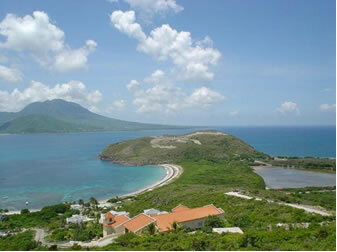Located in the Caribbean Sea, the territory of Saint Kitts and Nevis is formed by two small islands, which are separated by a 3,000 meter channel. The country has no land borders, being close to Puerto Rico and Antigua and Barbuda.
In 1493, Christopher Columbus arrived on the island, which was inhabited by Caribbean Indians. However, it was the British who, during the 17th century, initiated the colonization process, promoting the extermination of the native population and introducing the cultivation of sugar cane with the use of slave labor African. National independence was only achieved on September 19, 1983; after this fact, the nation became a member of the British Commonwealth – a bloc formed by the United Kingdom and its former colonies.
The country has mountainous relief and a beautiful coastline. São Cristóvão, the largest island, is home to 80% of the population, the majority descended from African slaves. Separatist movements in Névis defend the island's political autonomy, proposing separation from São Cristóvão.
The beautiful beaches of fine sand and blue waters attract thousands of tourists, making this the main source of income in the country. The financial sector also plays an important role in the economy of São Cristóvão and Nevis.

Isle of Nevis
Data from Saint Kitts and Nevis:
Territorial extension: 261 km².
Location: Central America.
Capital: Basseterre.
Tropical weather.
Government: Parliamentary monarchy.
Administrative division: 2 States (São Cristóvão and Nevis).
Language: English (official).
Religions: Christianity 94.7% (Protestants 52.6%, Anglicans 24.5%, others 17.6%), others 3.9%, no religion and atheism 1.4%.
Population: 46,111 inhabitants. (Men: 22,919; Women: 23,192).
Composition: African Americans 94%, Eurafricans 3%, Europeans 3%.
Demographic density: 176.6 inhab/km².
Average annual population growth rate: 1.2%.
Population residing in urban areas: 32.3%.
Population residing in rural areas: 67.7%.
Illiteracy: 2.2%.
Life expectancy at birth: 71.2 years.
Infant mortality rate: 16 deaths per thousand live births.
Households with access to clean water: 99%.
Households with access to a health network: 96%.
Currency: Eastern Caribbean Dollar.
Gross Domestic Product (GDP): 540 million dollars.
GDP per capita: $10,447.
External relations: World Bank, Caricom, Commonwealth, IMF, WTO, OAS, WTO, UN.
By Wagner de Cerqueira and Francisco
Graduated in Geography
Brazil School Team
countries - geography - Brazil School
Source: Brazil School - https://brasilescola.uol.com.br/geografia/sao-cristovao-nevis.htm
